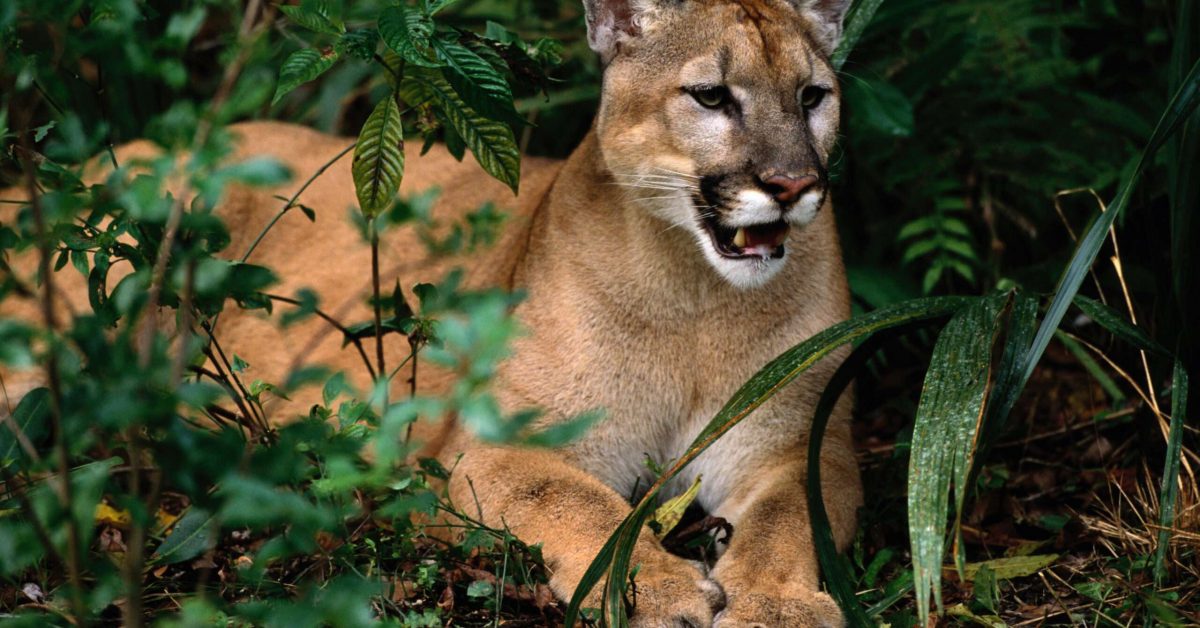More than a million of Collier County’s land mass of 1.3 million acres are in the Florida Wildlife Corridor, an area providing essential habitat and connectivity for many of the state’s species such as the Florida panther. As the human population in the county grows rapidly and development expands, conservation of the Florida panther and other species remains a much-discussed issue.
The third Saturday of March each year is designated as Save the Florida Panther Day in Collier County. A day that’s designated in state statute, March 18 of this year is meant to bring attention to the endangered species.
The only subspecies of mountain lion that remains in the eastern portion of the United States, the Florida panther was added to the endangered list in 1967. Florida Fish and Wildlife Conservation Commission estimates that around 120 to 130 panthers are left in the wild. As an umbrella species, protecting the panther consequently conserves other wildlife that are threatened and endangered.
“Given [the panther’s] endangered status and the limited habitat available and the fact that 1,000-plus people are moving to Florida every day, we need to be thinking about how we can plan appropriately so that we can have development to accommodate people in our economy, but [how] we can also maintain the connections and habitat needed for a thriving panther population,” said Meredith Budd, vice president of Friends of the Florida Panther Refuge, who accepted the Save the Florida Panther Day proclamation by county commissioners at their last meeting.
Around 70% of Collier is conserved land, including Big Cypress National Preserve and Fakahatchee Strand Preserve State Park. However, there are almost 200,000 acres within Florida Wildlife Corridor yet to be protected and still subject to development. Budd noticed support coming from the state level to conserve more spaces in the corridor such as efforts from the Florida Forever program, which lists 129 properties in the state on its acquisition priority list for conservation.
“There’s a lot of enthusiasm at the state level to protect the wildlife corridor and leave a legacy for future generations on land protection. And that is an exciting time to be in,” Budd said. “So, it’s very hopeful because there’s a lot of opportunity and there’s a lot of will to go and move forward and provide the funding necessary in order to acquire or put easements in place to make sure land is protected across the landscape.”
Land acquisition requires landowner participation, consistent state funding and expenditure of the funding toward conservation goals. Budd said it’s important to be proactive in understanding development needs to occur to accommodate human population growth. However, there are ways to incentivize development away from environmentally sensitive areas crucial for wildlife and water resources, she said.
“There are competing interests when you’re looking at development and when you’re looking at conservation. And we need to be able to look at it in a balanced way and see how we can be creative and how we can make it compatible with one another,” Budd said.
Collier already has strategies in place to encourage building in areas that are more heavily impacted already. The Rural Land Stewardship Area planning and zoning overlay is an example of one conservation strategy. Developments such as the recently approved Brightshore Village project are part of the program, with landowners agreeing to protect their environmentally sensitive land in exchange for credits from the county. These credits can then be used to entitle development on a less sensitive piece of private-owned land at an increased density.
Another effort by the county is Conservation Collier, which has a mission to purchase land with environmental significance. This program includes completed projects such as Gordon River Greenway and Pepper Ranch Preserve.
“[Conservation Collier] is a great way for the county to protect swaths of land in the urban area and outside of the urban area like eastern Collier County. And it also gives people access to it as well which helps to promote [conservation],” Budd said. “By having access to [the land], you can go out and enjoy it and it just makes you appreciate it so much more and understand why it’s so critical for us to protect our natural lands.”
Roadways are one of the leading causes of death for wildlife globally, and it’s no different for the Florida panther with roadkill ranging from six to 34 deaths annually since 2000. Roads tend to fragment habitat and as local streets continue to widen and expand, Budd said a priority is finding the funding and planning to implement more wildlife crossings.
“We can have a wildlife crossing as part of the initial [roadway] plans, which can, of course, save costs and that way wildlife can traverse those areas safely without getting hit by vehicles, alleviating that acute issue of roadway mortality,” Budd said. “But it can also help with genetic variability in terms of wildlife being able to move from point A to point B and beyond.”
As the entire state continues to face the issue of finding ways to balance development with protecting local wildlife, local organizations such as Friends of the Florida Panther Refuge, Live Wildly and more will continue to educate the community on the importance of Florida Wildlife Corridor and the panther as an umbrella species.
“We love living in Florida. It is stunning in terms of its natural landscape. We love the weather. We love the wildlife,” Budd said. “We know people are coming here, but we have to be able to better plan for them in order to make sure that we’re protecting the natural resources that we all love and that improves and makes our quality of life here the way that it is.”
Florida Panther Wildlife Refuge will be hosting a Save the Panther Day celebration Saturday at its Immokalee complex. The event is open to the public and will include activities such as free guided hikes, wildlife-themed exhibits and discussions with local conservation groups.





